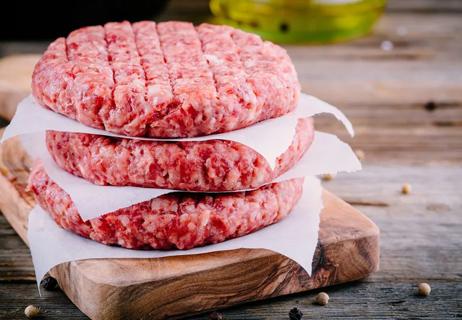Ultimately, rice is safe to eat, but the type, where it’s grown and how you cook it may be factors to consider

Odds are, there’s a box or bag of rice in your pantry ready for a future meal — and that can make it REALLY difficult to ignore headlines warning about dangerously high levels of arsenic found in the food.
Advertisement
Cleveland Clinic is a non-profit academic medical center. Advertising on our site helps support our mission. We do not endorse non-Cleveland Clinic products or services. Policy
A recent study found arsenic in 100% of rice samples purchased from stores across the United States. That’s right: Every single product tested, all 145 of them, had the toxic mineral.
So, is your dinner safe to eat? Let’s find out from registered dietitian Beth Czerwony, RD, LD.
As a naturally occurring element in the Earth’s crust, arsenic can be found in the soil and water that’s all around us. Mankind spreads arsenic, too, through activities like mining, manufacturing and farming (via fertilizer and pesticides).
All of that contributes to arsenic ending up in the flooded fields, or paddies, where rice is grown.
“Rice plants tend to be very porous,” explains Czerwony. “So, arsenic that’s in the soil or water where rice is being grown tends to be absorbed — and it eventually ends up in the grains of rice.”
Brown rice tends to have higher levels of arsenic than white rice. The reason? Brown rice includes more of the actual rice grain, which increases the amount of arsenic that may reach your plate.
White rice, on the other hand, is stripped of its outer layers during processing. That milling reduces the amount of arsenic. (“It’s still present, though — just in lower amounts,” notes Czerwony.)
Advertisement
Another factor affecting arsenic levels in rice is where it’s grown.
“The amount of arsenic in rice depends on the arsenic levels where it’s farmed,” says Czerwony. “Concentration levels can vary dramatically by location.”
Jasmine rice from Thailand and basmati rice from India are considered varieties of rice with lower arsenic levels. Ditto for rice grown in California, including types of sushi rice and Calrose rice.
Arborio rice (risotto) from Italy tested higher for arsenic and other heavy metals. White rice harvested in the southeastern United States also had higher levels.
Overall, rice is considered safe to eat, says Czerwony — but some caution is a good idea, particularly for young children and women who are pregnant.
Arsenic isn’t good for anyone, of course, but it’s particularly damaging to kids during their early developmental stages. Their smaller bodies make them more vulnerable to the toxic effects of the metal, which can result in:
For adults, the U.S Food and Drug Administration (FDA) reports that elevated or long-term exposure to arsenic has been linked to increased risk of:
“I know that all of that sounds scary,” says Czerwony, “but in a diet that includes rice, the risk to your health from arsenic exposure is very low for most people. You should feel safe eating it, even if it’s a significant part of your meals.”
Still worried about arsenic in your rice? Well, there are steps you can take to minimize your exposure — welcome news given that rice is a nutritional powerhouse and the most widely eaten food in the world!
Czerwony offers these suggestions to limit your risk:
Advertisement
“If you’re concerned about arsenic in rice, making a few changes in your cooking and meal-planning can reduce your exposure to it — and that’s never a bad idea,” says Czerwony.
Advertisement
Learn more about our editorial process.
Advertisement

Leftovers can be kept in the fridge for three to four days or frozen for three to four months

Washing your hands, thoroughly cleaning kitchen tools and preparing meat separately can reduce the risk of foodborne illness

Extended outages lasting more than four hours can make food in your fridge unsafe to eat

Microwaves use non-ionizing radiation and haven’t been shown to cause cancer — follow food safety practices and use microwave-safe containers

Once perishable food hits the table, it’s typically good for about two hours

Color, texture, smell and expiration date all hold important clues

No! Be sure to put your leftovers in the fridge

Not all processed foods are bad, but the fewer the ingredients, the better

The best parenting style balances enforcing rules and showing plenty of love

Tips include cutting back on sugar, focusing on exercise and managing stress

It can be harder to let go when you’ve invested time, energy and emotions — but it might be the healthier choice long term